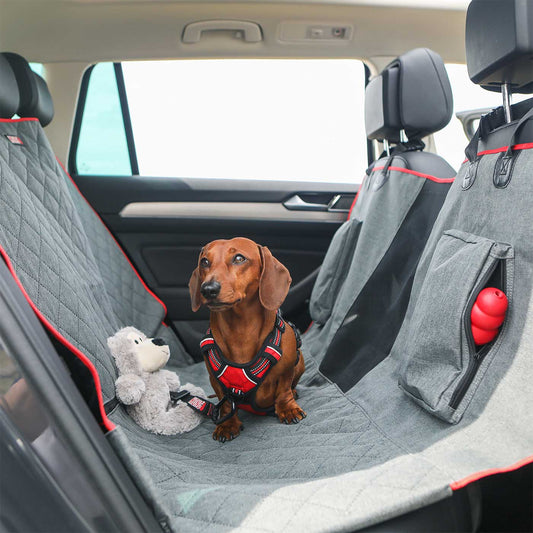Whether it’s for a trip to the vet or a visit to the beach, most of us will take our dogs in the car at some stage. It almost goes without saying, however, that cars can be dangerous for dogs if care and common sense are not applied.
Our friends at Vets Now, the UK’s leading emergency vets, have created the Seven Dos and Seven Don’ts for car journeys. And they want to remind us that we must always have our pets suitably restrained no matter how short the journey is, to keep them safe.
In fact, according to the Highway Code, motorists must ensure "dogs or other animals are suitably restrained so that they cannot distract you while you are driving or injure you, or themselves, if you stop too quickly". Insurers also warn that if dog owners fail to do this and their pet inadvertently causes them to have an accident, then their insurance company may not pay out.
Here Dave Leicester, Head of Telehealth at Vets Now, reveals the dos and don’ts for driving with your dog, whether he’s in the front seat or the car boot.
7 Do's For Dog Car Travel

- Restrain Your Dog Use a good quality harness, or a crate or guard, to keep your dog safe. There are many on the market so do your research first or seek advice from your vet.
- Always Carry Water Cars can get hot even when they’re moving, and dogs may become dehydrated on long trips. You can buy travel water bowls to ensure a drink is always on-hand.
- Make Regular Stops On Long Rides If you intend to be in the car for a long time, be sure to plan your journey so you can make plenty of stops. Your dog will appreciate being able to stretch their legs, enjoy a drink and some fresh air and go to the toilet.
- Use Window Shades While these are designed for babies and young children, your dog may also benefit as they help keep cars cool and block out direct sunlight.
- Try To Help Your Dog Relax There’s nothing worse than travelling with an anxious pooch. Do whatever it takes to ensure your dog is happy, content and comfortable sitting in your car. This might be as simple as giving them their favourite toy.
- Drive To Fun Places If your dog only ever goes in the car to visit the vet, he may associate it with distress rather than entertainment. Be sure to travel to places he loves visiting, too.
- Be Mindful Of Motion Sickness Most dogs will outgrow this condition, but if you’re concerned about it, go to your vet as they may be able to prescribe medication. It’s also worth bearing in mind dogs tend to suffer less if they’re facing forward while you’re driving.
7 Don'ts For Dog Car Travel

- Let Your Dog Hang Out The Window While this may look cute, it’s highly dangerous. Our vets have witnessed dogs suffer horrific injuries after hitting a passing vehicle while hanging out of a car.
- Forget To Switch Off Airbags If your dog is secured in a harness in the front seat, be sure to move the seat as far back as possible and switch off the passenger-side airbag as it may do more harm than good if you have an accident.
- Open Windows Entirely It’s imperative to keep your dog cool on car journeys, and this can be achieved by opening windows a little to allow a cool breeze to circulate. But never open them entirely as your dog may try to jump out.
- Take Your Dog Anywhere Without An ID Tag Or Microchip By law, dogs who go outside must have a microchip implanted by the time they’re eight weeks old and wear a collar with their owner’s name and address.
- Feed Your Dog Just Before You Travel This can upset your dog’s tummy and bring on motion sickness, which is the last thing you’ll want on a long journey.
- Leave Your Dog Alone In A Car This is particularly dangerous on warm days. Dogs can overheat within a matter of minutes, and heat stroke is a common cause of admissions to Vets Now pet emergency clinics and hospitals in the summer.
- Forget To Take A Food Supply It’s worth taking some of your dog’s usual food on any long car journey, just in case you break down or get stuck in heavy traffic.
Need some additional advice? If you are enjoying staycation at home or just enjoying a day out with your pet this summer, emergency providers Vets Now are just a tap away with Video Vets Now. You can book your appointment and get chatting to a qualified vet from your campsite, caravan or conservatory.
A ten-minute video consult costs £24 and is refundable if Vets Now recommend an in-person follow up within 48 hours. For more details and how to book visit: Online Vets | Video Chat With Our UK Based Vets | 8am-11pm Daily (vets-now.com)




























































































